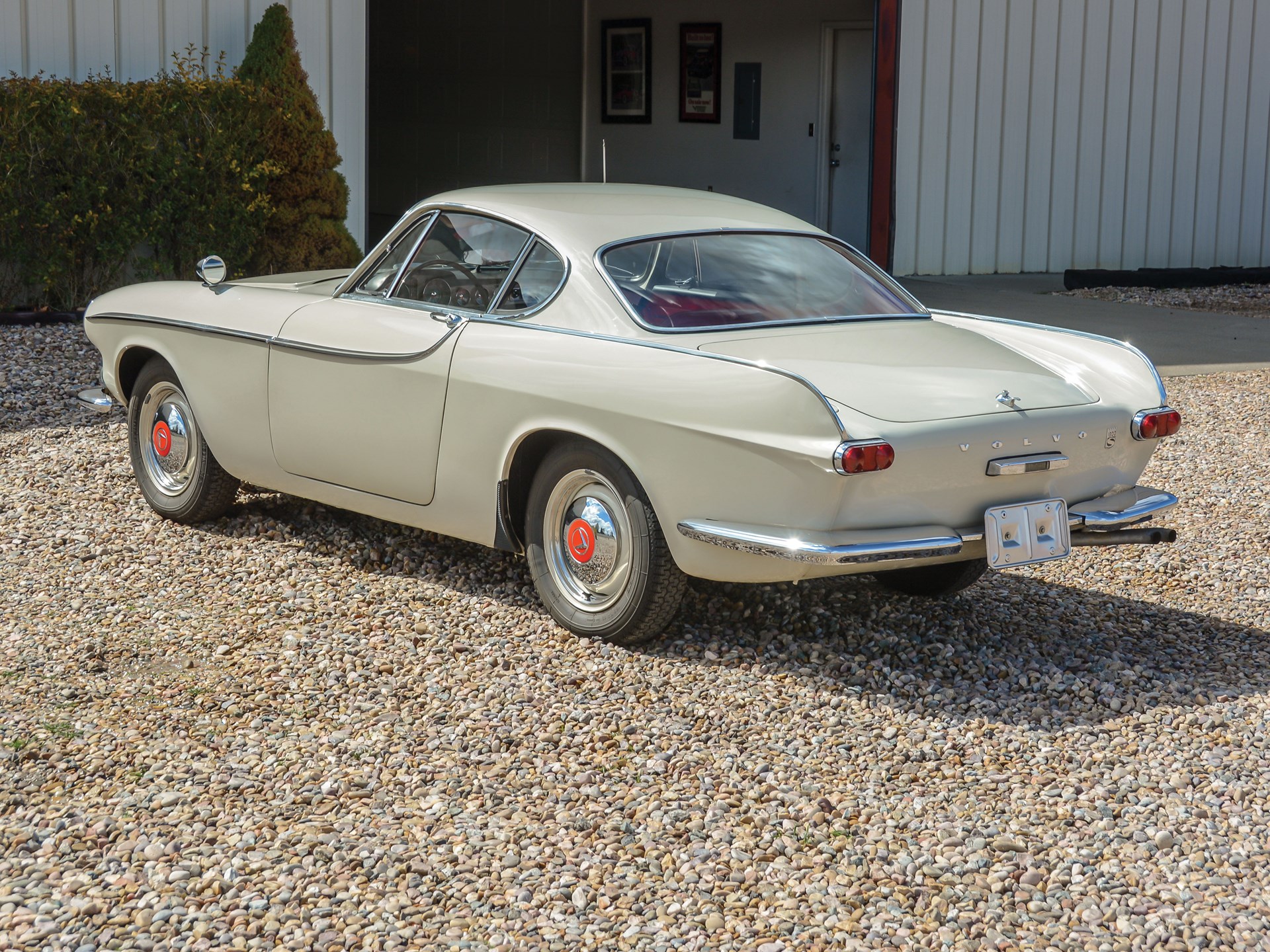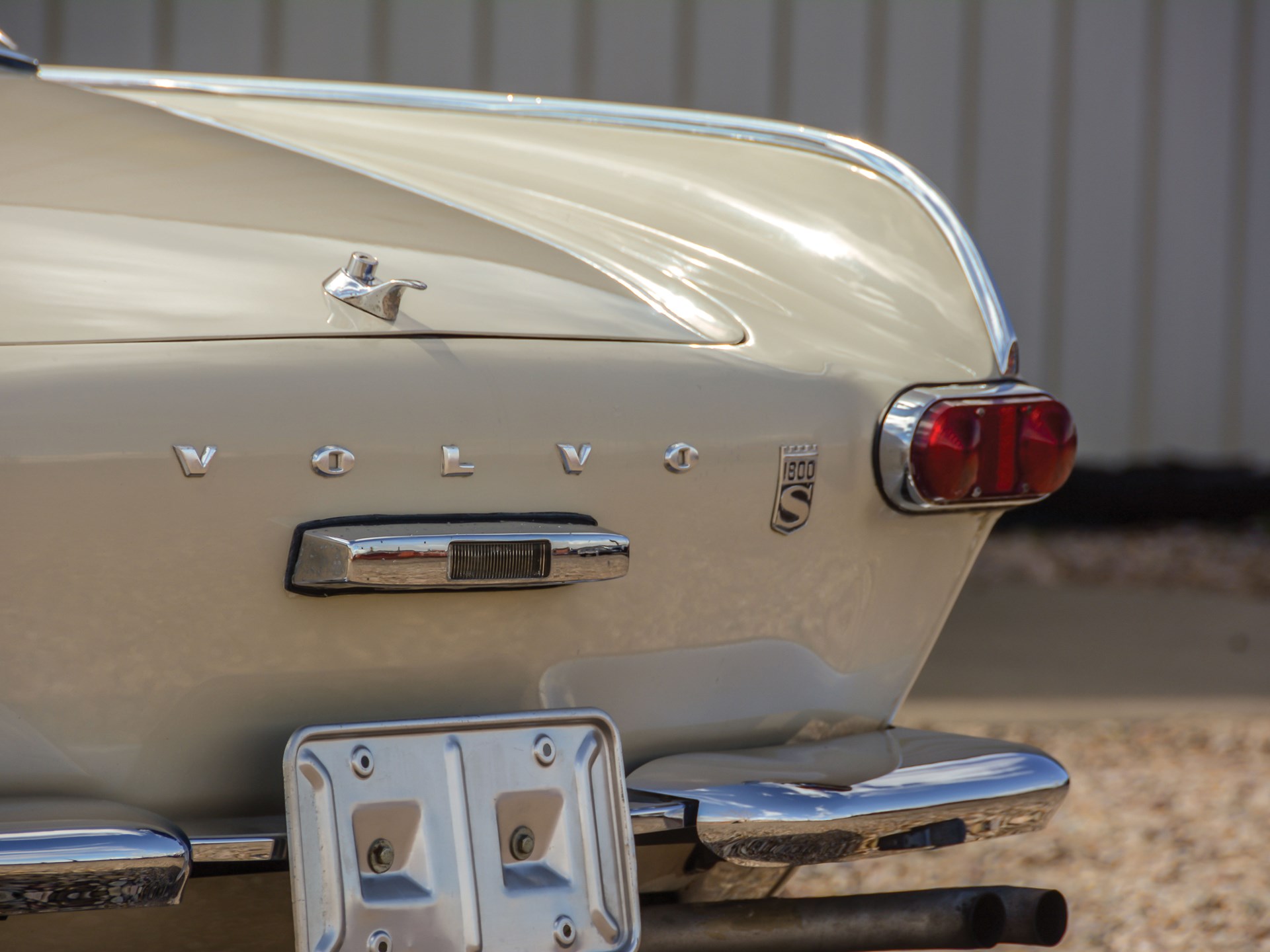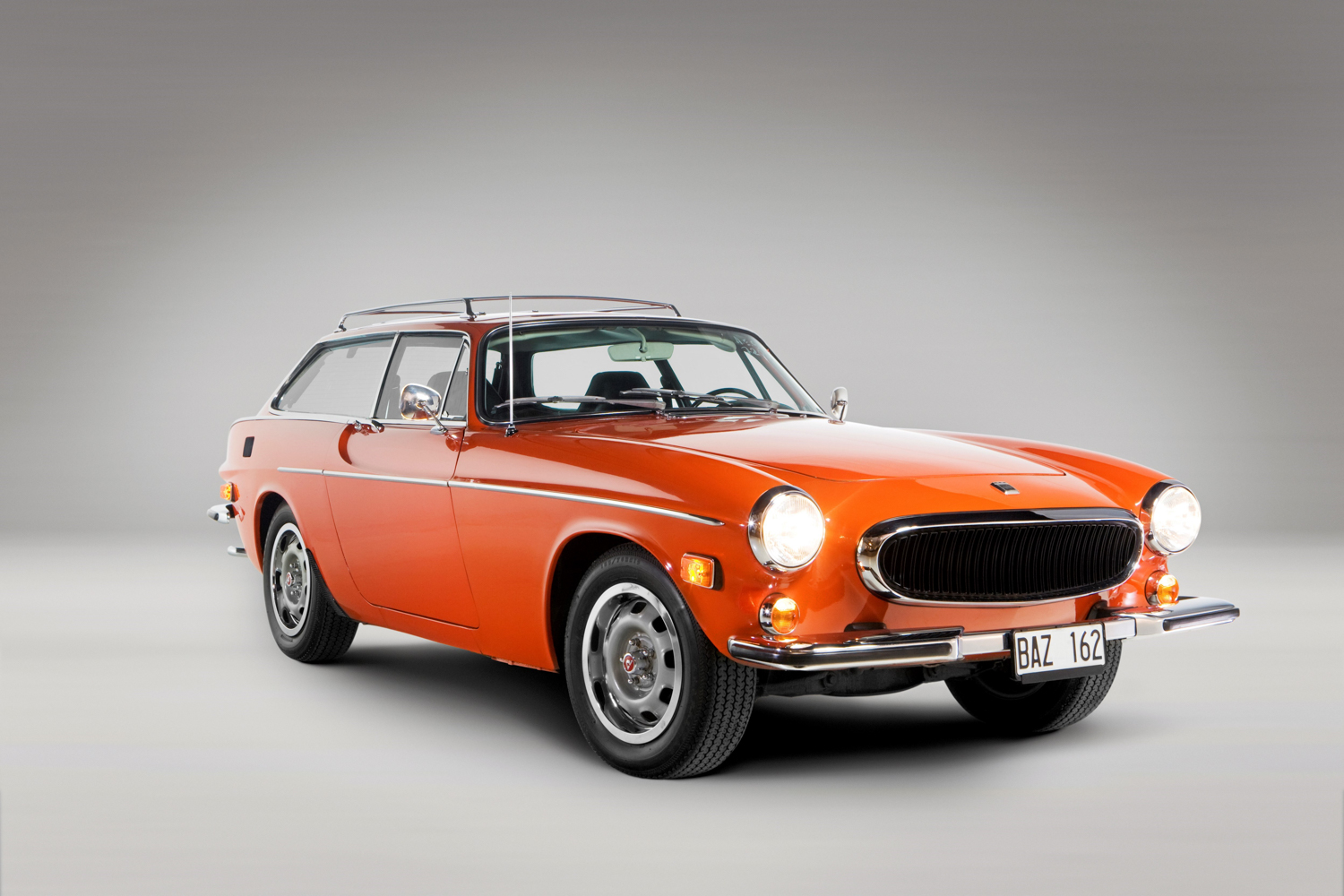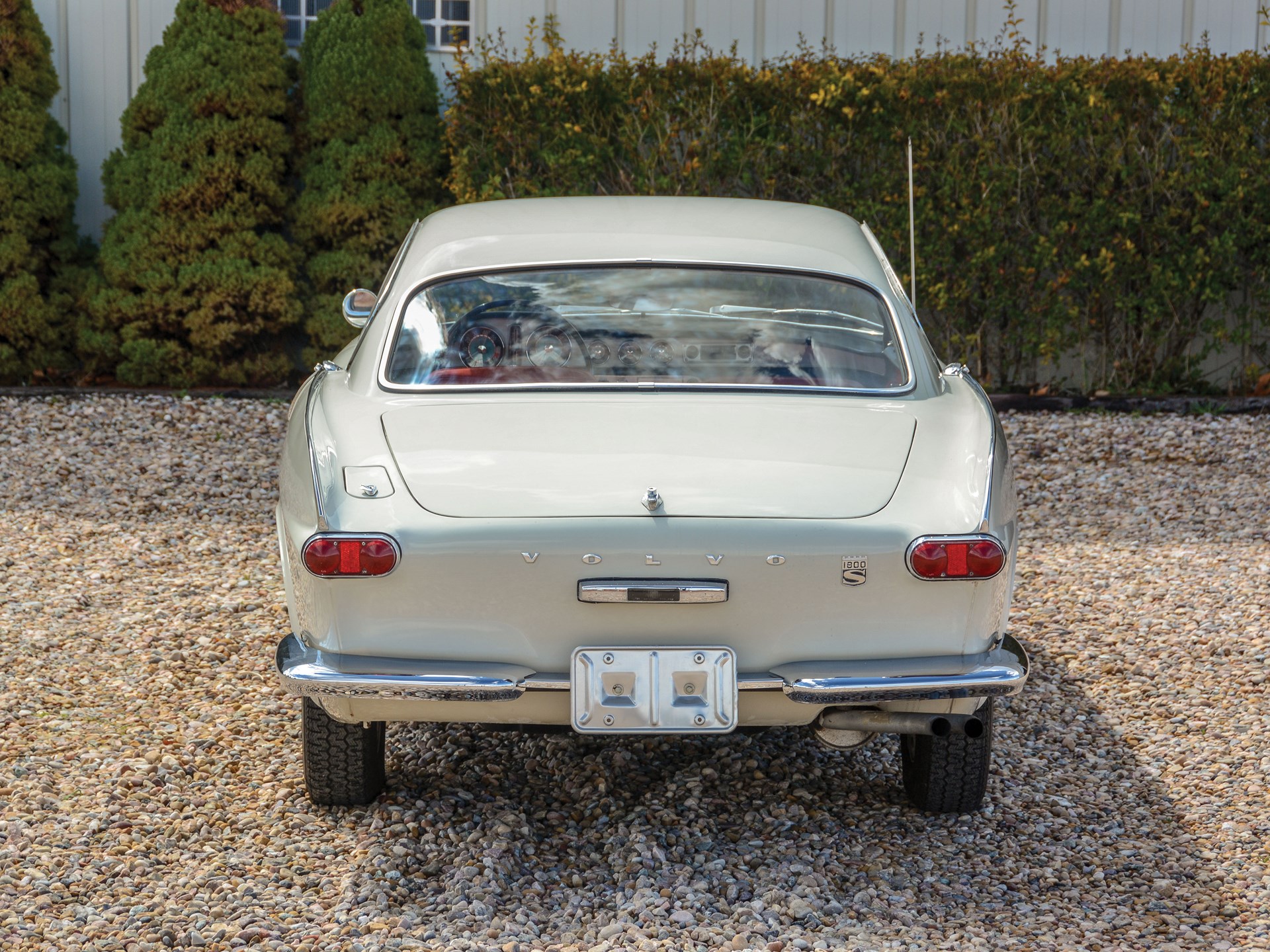Media | Articles
The 1961–73 Volvo 1800 is a svelte Swede that’s getting more expensive
Occasional Polestar or R models notwithstanding, Volvo road cars don’t exactly have a reputation for performance. They certainly didn’t in the late 1950s. The word “sturdy,” not “sporty,” comes to mind when we think of old Volvos like the PV544 and the Chrysler-esque 122 Amazon, so the svelte P1800 was a huge departure for the usually shrewd Swedes. After the goofy-looking fiberglass P1900 proved a resounding flop, Volvo doubled down on a more serious sports car project. The result was the P1800—arguably the most gorgeous car to ever come out of Viking country.
From the beginning, the P1800 (which evolved into the 1800S, 1800E and 1800ES) impressed not just with its looks, but also for punching above its weight. One period advertisement called it “sort of a souped-down Ferrari.” Another lined up the P1800 below an Aston Martin, a Mercedes 300SL Roadster, a Maserati, and other exotics while asking, “What’s it like to own a $10,000 car? … Find out for $3995.”
In the years since, value continued to be one of this car’s greatest virtues. While never the fastest thing for the money, it looked more exotic than it was, was relatively rare, and offered that legendary Volvo reliability with an unburstable engine and rock-solid build quality. Volvo made a fun, hassle-free car, and for many years a four-figure price could get you a decent driver.
Buyers finally got wise to the 1800’s virtues, and prices have been climbing for a while now. Although 1800s are still relatively affordable compared to some of the cars they competed against back in the day, they’re not the temptingly cheap, overlooked classics they once were. Really good ones are hitting $30K in some cases, with the best of the best time-capsule cars commanding two or even three times that at auction. A lot of the biggest sales have also come recently, suggesting there is still some room for growth.
Birth of the Volvo 1800
Marketplace
Buy and sell classics with confidence




The P1800 (‘P’ for ‘Personvagn’) was ambitious for a growing but small carmaker like Volvo. The company was already making as many PV544s and Amazons as it could sell, so Volvo outsourced final 1800 assembly to Jensen, the English company that constructed bodies for the Austin-Healey 3000 as well as its own cars. Pressed Steel in Scotland, meanwhile, produced many of the components. Cross-border car production is par for the course these days, but the P1800 was quite the cosmopolitan affair for the early 1960s. As for the wonderful styling, some credited it to Frua in Italy, but it was actually the work of Swedish designer Pelle Petterson.
Although more high-speed cruiser than all-out sports car, the P1800 was well received by the press, and Volvo received an extra injection of publicity when a white P1800 was chosen as Roger Moore’s ride for British TV show The Saint. This was after the folks at Jaguar refused to give the producers an E-type on short notice. Their loss.
Initial quality control problems with the Jensen-built P1800s (and Volvo’s own expanding capacity) meant that production moved to Sweden in 1963 after 6000 had been built, far short of initial targets. With the move back home, Volvo’s curvy coupe got rebadged the 1800S (‘S’ for ‘Sweden,’ not ‘Sport’). There were some cosmetic changes, and both performance and quality improved.
The 1800S kicks things up a notch

Further changes were mostly small over the next decade, but there was another significant bump in power for 1966. By 1969, the 1778-cc four-cylinder was dropped in favor of the 1986-cc B20 engine. In ’69, power and efficiency went up with the 1800E, which featured Bosch fuel injection (the ‘E’ stands for Einspritz, the German word for fuel injection). The 1800E also added an available Borg Warner three-speed automatic, and then in 1971 came a black plastic grille instead of the old metal one. Interiors also got less charming and more plasticky after 1967.
Even by the 1800E’s introduction, Volvo’s sports car was getting long in the tooth, and by mid-1972 the car was gone… at least in coupe form. The year before, Volvo introduced the 1800ES, essentially an 1800E that had been reworked into a hatchback. There was obviously more room, but aside from added practicality, the 1800ES really cuts a nice figure—especially with that elegant, huge frameless glass rear hatch, which led to the nickname “Snow White’s hearse.” The 1800ES was only a short-term measure, though, and the whole 1800 line was gone after 1973.
After Jensen screwed together the first 6000 cars, Volvo built about 24,000 1800S models, 9400 1800Es, and about 8000 ESs. The majority of these went to North America. In the years since, the car has distinguished itself for a few things. There are the classic ’60s curves that contrast with the rolling boxes of the 1970s-90s, plus the tempting style per dollar value. What really makes the Volvo stand out, though, especially in the world of performance cars, is longevity. Volvo called it “either the world’s fastest, prettiest truck, or the world’s toughest, most reliable sports car.” Volvo owners are no strangers to high-mileage, of course, but late owner Irv Gordon’s 1966 1800S has them all beat with a world record 3.2 million miles. Try doing that in your MG.
Finally getting its due



With classic cars of all types starting to get pricier in the early 2010s, the Volvo was never going to stay a secret. Prices have shown strong and continuous growth for several years, with Condition #2 (Excellent) values never experiencing a single drop since the beginning of 2010. The largest bump in #2 values was 18 percent in the September 2016 update, but the other increases have been both regular and sizable. The most recent update to our values saw mostly flat activity other than a 1.5-percent increase for the 1800ES. Expect prices for the 1969–72 1800E to rise further after someone paid a record $91,840 for a pampered 40K-mile (not even broken in for a Volvo) all-original car last month in Scottsdale.
That was the third-most expensive 1800 of any type ever sold at auction, not far behind the $92,400 paid for a 1972 1800ES in 2018 and a ’73 model in 2014. Those are exceptional results for exceptional cars, however, and most 1800s trade for far less, even though they’re not as cheap as they used to be.
The most valuable is the 1800ES, which ranges from $9500 for a Condition #4 (Fair) example to $51,500 for a Condition #1 (Concours) car. The cheapest, meanwhile, is the 1800E that ranges from $8100 to $36,500. The 1800E also seems to offer the most value. It’s not quite as good looking (inside nor out) as the earlier coupes, but it’s the quickest of the bunch, has a more modern fuel-injection setup, and costs on average 35-percent less than a hatchback 1800ES. The earliest Jensen-built cars are the rarest and arguably the prettiest, but they’re also the slowest and weren’t built to the standards people came to expect from Volvo.
Regardless of which one you pick, a well-kept 1800 comes with entry into friendly, easygoing and quirky Volvo subculture, plus it’s a relatively worry-free way to get around and look great doing it. And while few would call them cheap anymore, driver quality examples are still reasonable. For now, anyway.
















